In a neglected cemetery lie black jockeys who helped create the Kentucky Derby
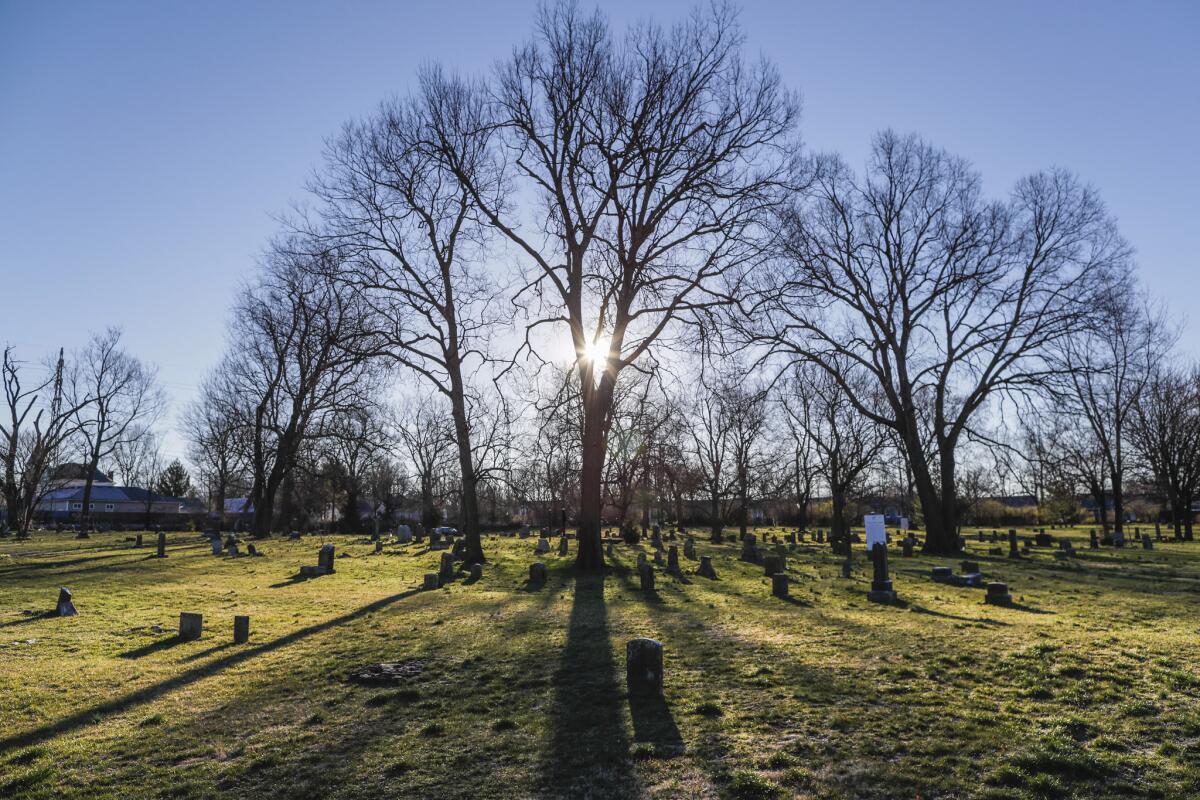
LEXINGTON, Ky. — The headstones — cracked, chipped, crumbled — rise sporadically across eight acres of dried grass. Mold and wind have eaten away at the slabs of stone, but if you kneel close enough, maybe wipe a palm across the faded inscriptions, family names emerge.
Lewis
Perkins
Murphy
Tucked off a quiet two-lane road lined by towering oak trees in Lexington, you’ll find African Cemetery No. 2, the burial site of many of Kentucky’s first — yet often least remembered — jockeys and horse trainers.
Every May, racing fans from around the world flock to Churchill Downs in Louisville, eager to watch thoroughbreds — many of them reared in the rolling hills nearby — tear around the track. The horse racing industry brings billions of dollars and infinite pride to the Bluegrass State each year. This Saturday will mark the 145th running of the Kentucky Derby.
But as with the cemetery that houses the remains of some of the sport’s pioneers, little attention is paid to the critical role black equestrians played in forming the industry in the late 1800s. In the years after the Civil War, most horse trainers and grooms were black men — so, too, were jockeys. Of the first 28 winning jockeys of the Derby, 15 were African American.
By the early 1900s, racism and Jim Crow had started to push more and more African Americans from the sport. Beginning in 1922, no black jockeys would appear in the race for decades — a marginalization of blacks that continued until 2000, when Marlon St. Julien rode in the Derby. Kevin Krigger, the most recent black man to ride in a Derby, finished near the bottom of the pack in 2013.
Walk to the far edge of African Cemetery No. 2 and you’ll find a gray column with the family name of jockey Oliver Lewis. Born into slavery outside Lexington in 1856, Lewis rode Aristides, an American thoroughbred, across the finish line to first place in the inaugural Derby in 1875. Other than the marker on his grave and a small stretch of highway through Lexington, there are few monuments honoring him in his hometown, about 80 miles south of Cincinnati.
Fifty steps away, near the center of the cemetery, you’ll stumble upon the Perkins family plot. In 1891, at age 11, James “Soup” Perkins — nicknamed for his favorite dish — started riding horses. Just four years later, the Lexington native became one of the youngest jockeys ever to win the Kentucky Derby.
The Lewis and Perkins headstones make no mention of their riding days, though elsewhere in the cemetery you’ll find gravestones decorated with rusted horseshoes.
Nearby, in a thick clump of grass, stands a red and black old-style furlong marker. It marks the location where the legendary Isaac Burns Murphy was once buried.
Murphy, who competed in the Derby 11 times — winning in 1884, 1890 and 1891 — died of heart failure in 1896. For decades, Murphy was known as one of the best jockeys to ever race — and for his honesty in an era known for the occasional payoff or rigged race. In 1879, he refused to let champion Falsetto lose the Kenner Stakes, even though he was offered bribes.
Despite his horse racing success, his grave sat unmarked for more than 60 years until the 1960s, when a Kentucky researcher tracked down his burial site. Murphy was re-interred twice, and now lies 10 miles away at the Kentucky Horse Park, an educational farm dedicated to the state’s equestrian culture. Since its opening, he’s been the only man buried at the park, feet away from Man o’ War, an American thoroughbred who won 20 of 21 races and is widely considered the best horse to ever race.
Carved into Murphy’s headstone: “I am as proud of my calling as I am of my record, and I believe my life will be recorded a success, though the reputation I enjoy was earned in the stable and in the saddle.”
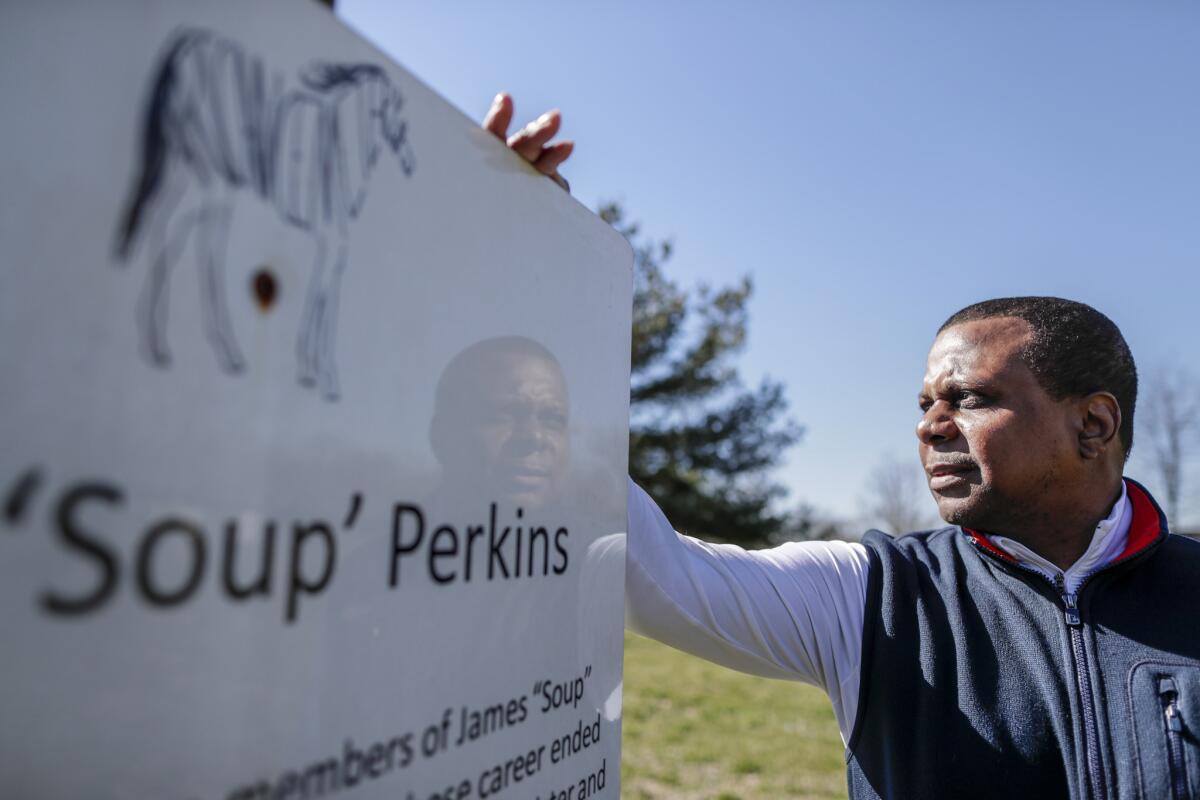
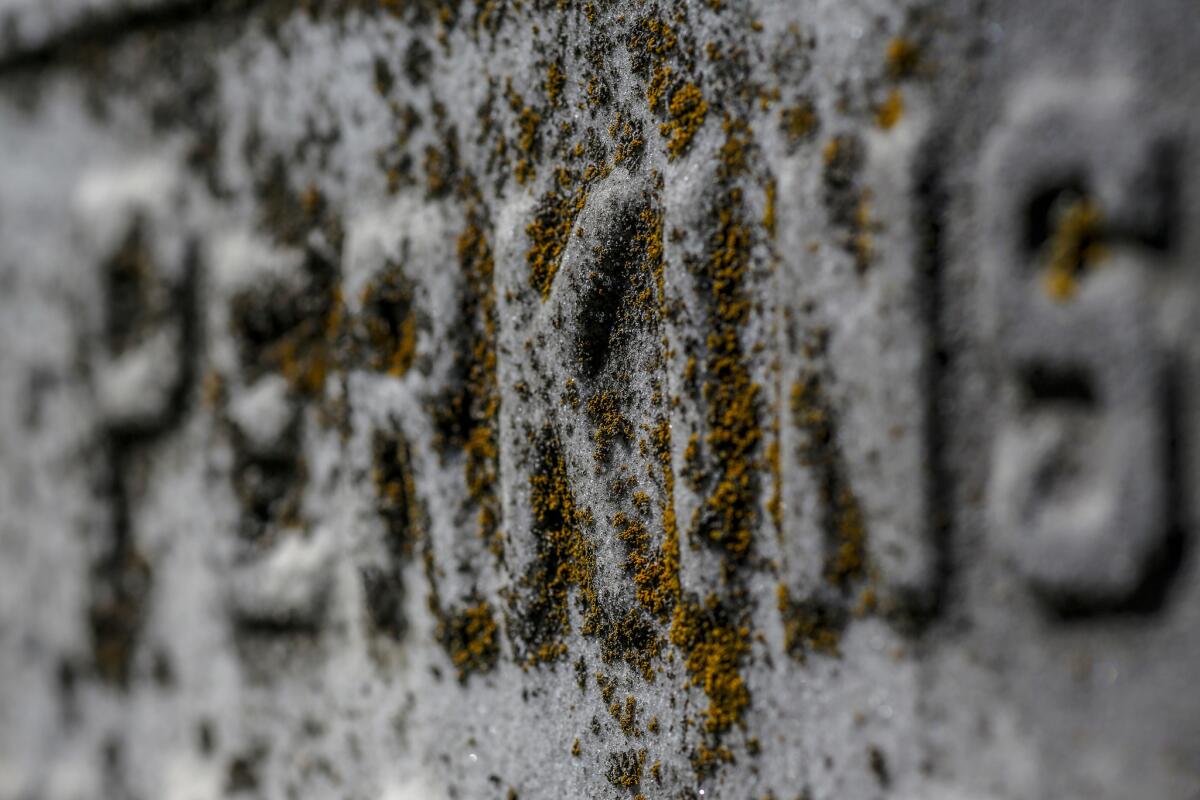
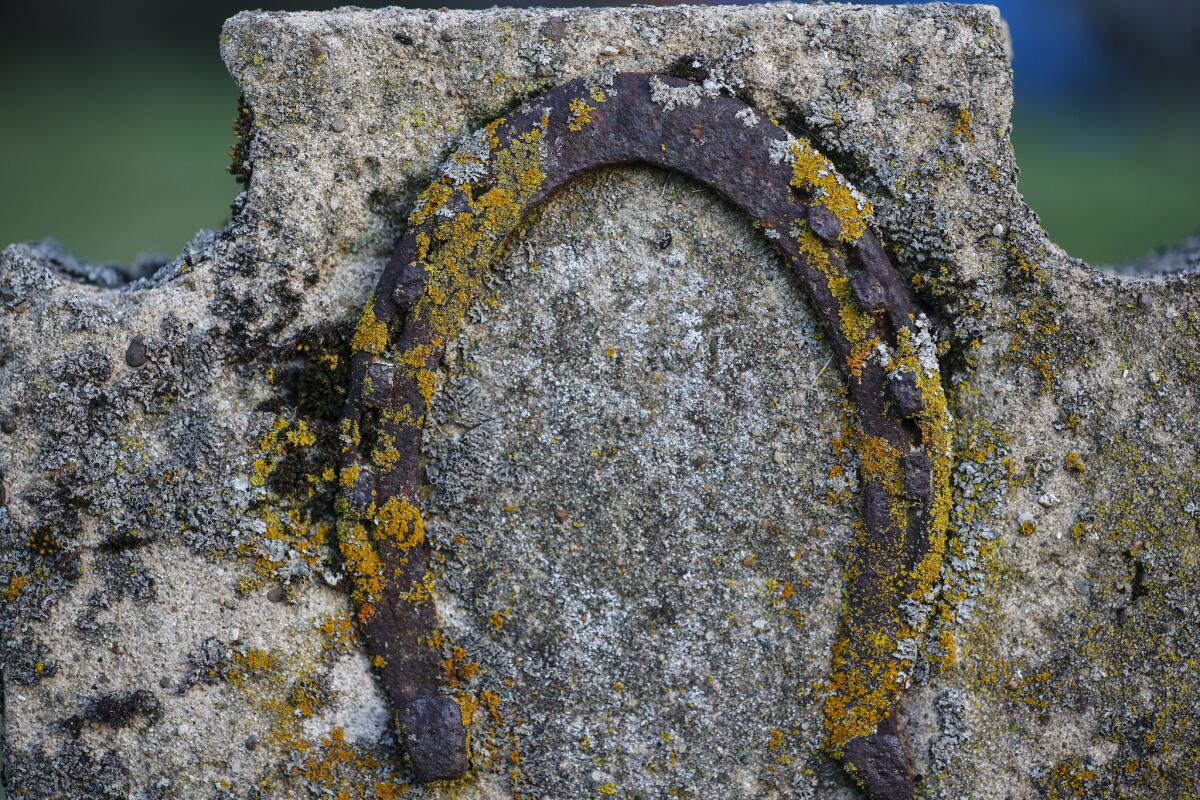
The grounds at the horse park — gently sloping green fields divided by white rail fences — are impeccably maintained. But there’s no such honor, or beauty, at African Cemetery No. 2.
Leon Nichols, a Lexington native who has worked with horses most of his life, is dedicated to spreading the forgotten histories of these men, and others like them. He grew up just a few blocks away. As a boy, Nichols and friends would sprint through the cemetery playing tag or tossing footballs. Back then, he wasn’t aware of the history of the nearly 5,000 entombed — fewer than half with headstones — around him.
“It’s essential that this history is not forgotten, especially with the lasting legacy horse racing has in this state.”
— Leon Nichols, Project to Preserve African-American Turf History
Nichols, now 51, also spent time in the stables with his uncles, who worked as grooms and trainers. At 15, he was hired as a “hot walker,” guiding race horses around for a cool down after workouts. It was only as an adult that his uncles related the history of the burial ground. Twelve years ago, he helped found the Project to Preserve African-American Turf History, a group dedicated to educating people about the groundbreaking role of black equestrians and to helping preserve the cemetery — an equestrian mecca, as he calls it.
“When you think about horse racing history, really there is no place that compares to African Cemetery No. 2,” said Nichols, an entrepreneur. “These men helped shape the sport.”
Nichols recently walked through the cemetery, recalling his childhood and the legends laid to rest here. Robins chirped. The hum of a car driving past every few minutes broke the silence.
“Sometimes I wonder if neighbors even know about this history … know about these men,” he said.
At Derby time each spring, Nichols’ group hosts the Isaac Murphy Image Awards, which aim to educate the public about the role of black jockeys. The ceremony also recognizes the achievements of blacks in business and education. Nichols’ group has worked with the University of Kentucky, which in 2010 offered research assistance and helped construct placards — white boards attached to dark-green fence posts — with information about the lives of those entombed at the cemetery.
The gates to the cemetery always remain open to the public. While a majority of those honored have ties to equestrianism, prominent black journalists, preachers and soldiers are also buried here, including members of the U.S. Army’s 9th and 10th Cavalry regiments, all-black pre-integration units commonly known as the Buffalo Soldiers.
The burial ground opened in 1869 as a cemetery for the Colored Peoples Union Benevolent Society No. 2. Over time, it became known by its current name, a remnant of the Reconstruction and Jim Crow eras, when blacks and whites were buried in separate cemeteries. The last burial took place in 1974, and the site was named to the National Register of Historic Places in 2004.
“So much African American history — not just in Kentucky, but all over the nation — is lost,” Nichols said. “It’s essential that this history is not forgotten, especially with the lasting legacy horse racing has in this state.”
Pellom McDaniels III, a curator of African American Collections at Emory University in Atlanta and author of “The Prince of Jockeys: The Life of Isaac Burns Murphy,” said the Lexington cemetery is a time capsule of sorts.
“It is a story of striving African American men, women and children reaching for and claiming the opportunities that freedom provided,” McDaniels said. “The roots of Kentucky's success in the horse industry [are] literally buried in African Cemetery No. 2.”
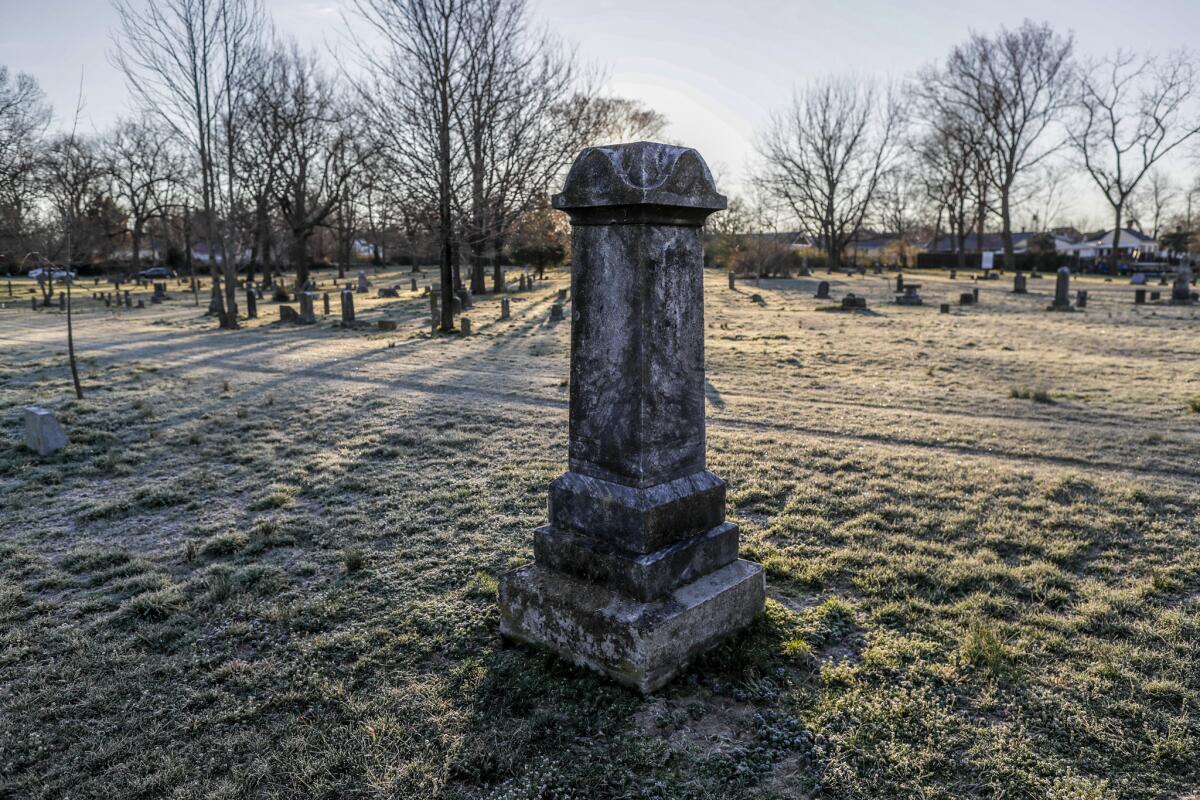
On a recent morning, a persistent drizzle darkened the headstones and created puddles in the soggy grass. The sounds of a power drill from a nearby auto garage pierced the air, and a man in his 50s walked his two dogs along the sidewalk nearby.
“Good morning,” he said, staring in surprise. “No one ever comes here.”
A gust tore through, sending an empty Mountain Dew bottle cartwheeling across the cemetery. The white placards — monuments to history — flapped in the wind.
Listen to correspondent Kurtis Lee talk about this Column One on Arrive Early, Leave Late »
Additional credits: Produced by Justin L. Abrotsky. Video edited by Jackeline Luna.








